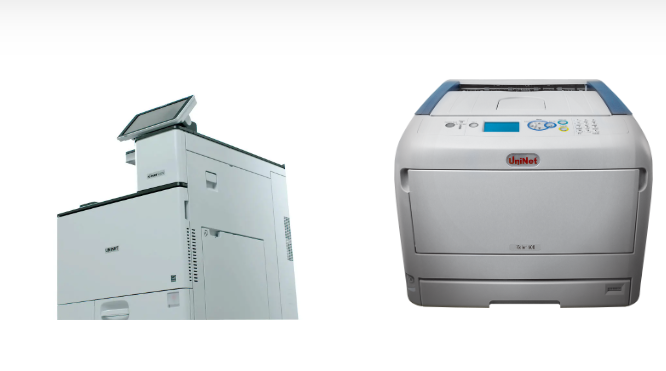Starting a custom apparel business is an exciting venture, and one of the most important decisions you’ll make early on is choosing the right shirt printing machine. Whether you’re launching a new brand, printing for corporate clients, or running a print-on-demand service, the machine you select can directly impact your production quality, turnaround time, and overall profitability.
In this article, we’ll break down the essential factors you need to consider when selecting a shirt printing machine that aligns with your business goals.
1. Define Your Business Needs
Before you even begin comparing machines, take a step back and answer a few key questions:
- What type of designs will you print?
Are they simple logos or full-color, photo-realistic images? - What volume do you expect to produce?
Will you be printing one-off shirts or bulk orders? - What materials will you work with?
Cotton, polyester, blends? Some machines are fabric-specific. - What’s your startup budget?
Machines range from a few hundred to tens of thousands of dollars.
Having clarity on these questions will help narrow your choices and avoid investing in a machine that doesn’t fit your workflow.
2. Understand the Different Printing Methods
There are several major shirt printing technologies, and each has its own strengths and ideal use cases:
Direct-to-Garment (DTG)
- Best for: High-quality, full-color designs
- Pros: No setup time, great for custom and low-volume orders
- Cons: Slower than other methods for large runs, works best on cotton
Screen Printing
- Best for: High-volume orders with simple designs
- Pros: Durable prints, low cost per unit in bulk
- Cons: Long setup time, not ideal for one-off designs
Heat Transfer Printing
- Best for: Small businesses and hobbyists
- Pros: Low startup cost, works with many fabric types
- Cons: Less durable than other methods, slower for bulk
Sublimation Printing
- Best for: All-over prints on polyester fabrics
- Pros: Vivid, long-lasting designs
- Cons: Limited to polyester and light-colored garments
Each method has different equipment requirements, so understanding the technique that fits your niche is crucial before purchasing a machine.
3. Consider Your Production Volume
Think about how many shirts you plan to print per week or month.
- Low volume (under 100 shirts/month): A basic heat press or entry-level DTG machine may suffice.
- Mid volume (100–500 shirts/month): A more robust DTG or semi-automatic screen printing setup may be needed.
- High volume (500+ shirts/month): Industrial screen printing or advanced automated systems are ideal for scaling.
Choosing a machine that can handle your expected volume ensures smoother operations and faster delivery.
4. Evaluate Print Quality Requirements
Not all printing methods offer the same print quality. If your business centers around fashion, brand merchandise, or detailed artwork, print quality matters more.
- DTG and sublimation offer high-resolution prints with gradients and fine details.
- Screen printing works well for solid colors and bold graphics.
- Heat transfers are decent for casual designs but may lack long-term durability.
Check sample prints (either in person or online) from each method to ensure the output meets your brand’s standards.
5. Check Material Compatibility
What kind of garments will you be printing on? Not all machines are compatible with every fabric:
- Cotton: Compatible with DTG, heat transfer, and screen printing
- Polyester: Works best with sublimation or specialized transfer materials
- Blends: May require pretreatment or a hybrid printing approach
Be sure the machine you choose works with your preferred fabric types, especially if you’re offering sportswear, hoodies, or fashion-forward cuts.
6. Analyze Maintenance and Support
Every shirt printing machine requires some level of care. Be sure to factor in:
- Daily or weekly maintenance tasks (e.g., printhead cleaning, screen prep)
- Availability of replacement parts
- Customer support and technical assistance
- Training resources or onboarding support
Machines with complex parts or proprietary inks may come with additional upkeep costs. Choose a machine that matches your capacity for routine maintenance.
7. Factor in Long-Term Costs
The upfront price is only part of the story. Don’t forget to calculate:
- Ink or transfer costs
- Pretreatment or cleaning supplies
- Blank apparel inventory
- Software or design tools
- Electricity and ventilation requirements (for industrial setups)
Also, consider scalability. If your machine can’t grow with your business, you might need to replace it sooner than expected—leading to higher long-term expenses.
8. Decide Between New or Used Equipment
Buying new offers peace of mind with warranties and the latest technology. However, used machines can be a smart budget-friendly choice, especially when starting out.
If considering a used machine:
- Inspect it thoroughly
- Request print samples
- Ask about its usage history and maintenance
- Ensure software and drivers are compatible with your setup
Don’t forget to verify that the machine still has support available from the manufacturer.
9. Consider Machine Size and Space
Your physical workspace may also influence your decision. Some machines require:
- Large flat areas
- Ventilation systems
- Heavy-duty electrical outlets
- Drying or curing stations
Make sure your workspace can accommodate the machine and any necessary add-ons.
10. Look for Future-Proof Features
If you plan to grow, select a machine with the ability to scale—either through automation, faster output, or compatibility with different materials.
You might also want to consider:
- Software integrations
- Upgradeable parts
- Add-ons like auto-loaders or conveyor dryers
Choosing a machine with these capabilities can help you avoid outgrowing your equipment too quickly.
Conclusion
Choosing the right shirt printing machine for your business isn’t just about price—it’s about finding a tool that fits your workflow, goals, and customer expectations. Whether you’re creating detailed artwork for a fashion brand or bulk printing uniforms for events, the right technology can make all the difference in your success.
Take the time to evaluate your needs, understand your production goals, and research thoroughly before making a purchase. A thoughtful investment today can set your business up for long-term growth, creativity, and profitability.



















